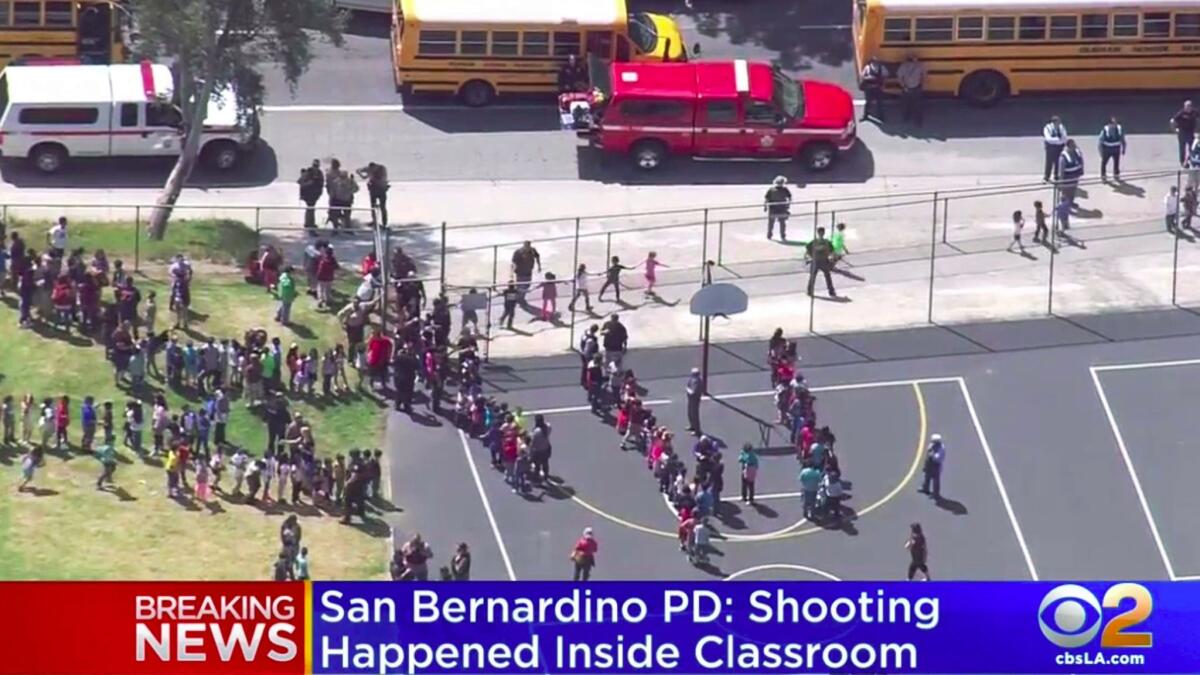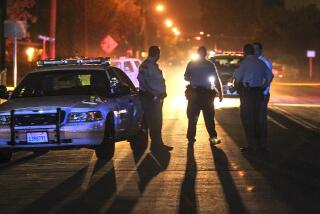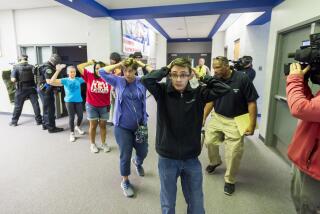Editorial: If you’re shocked by the San Bernardino shooting, you haven’t been paying attention

It was the location that made the killings stand out — an elementary school in violence-racked San Bernardino, a community still recovering from a mass shooting that left 14 people dead less than two years ago. But the sad reality is that Monday’s murder-suicide committed in a special needs classroom at North Park Elementary School was as mundane as American gun violence gets — because it was not an act of terrorism or an attack by disgruntled students on their classmates. Rather, it was an act of domestic violence, the kind that occurs every single day in the United States.
Cedric Anderson, 53, checked in at the school office Monday morning saying he needed to drop something off for his estranged wife, Karen Smith, described by a colleague as a “beloved teacher” who “went to bat for every one of her students.” Waved onto the campus, Anderson opened the door to Smith’s classroom, pulled out a hidden .357 handgun and began firing, killing Smith and wounding two nearby students. Then Anderson reloaded his gun and killed himself.
A woman is shot and killed by a current or former romantic partner every 16 hours
There was an almost palpable sense of relief when the initial toll of two dead and two wounded didn’t climb, as so often happens. But then it did: 8-year-old Jonathan Martinez, one of the wounded children, died at the hospital before he could make it into surgery. Still, given that the classroom held 15 students and two adult aides, it could easily have been an even worse tragedy. Such are the grim emotional calculations we make in such a violent nation.
School shootings have grabbed so many headlines in recent years that we’ve almost become accustomed to them. Yet lethal domestic violence is so much more frequent, it’s overlooked by the media, and we as a society seem to have stopped noticing long ago.
It’s disturbing to think that if Anderson hadn’t killed his wife in such a public and dramatic way, the crime would have barely rippled beyond the grief of their families and friends. In fact, The Trace — a nonprofit journalism site that covers firearms — reports that a woman is shot and killed by a current or former romantic partner every 16 hours, and that a woman is five times more likely to be killed if the abuser has access to a gun. The pro-gun control group Everytown for Gun Safety reported in 2014 that more than half of women murdered with guns in the U.S. are killed by domestic partners, and that from January 2009 through June 2014, nearly three of five mass shootings (at least four people killed or wounded) involved an act of domestic violence — crimes that rarely resonate beyond the communities in which they occurred.
That such acts of gun violence have become so routine, and that so little is done to address the problem, is the broader tragedy here.
Follow the Opinion section on Twitter @latimesopinion or Facebook
More to Read
A cure for the common opinion
Get thought-provoking perspectives with our weekly newsletter.
You may occasionally receive promotional content from the Los Angeles Times.






